Do you want to add some pizzaz to your glassware? With just a few tools, you can infuse some creative flair to cups, bottles, wine glasses — the possibilities are endless!
Learn helpful tips and techniques for painting on glass.

With the right paint, you can transform your glassware into beautiful works of art!
Tools for painting on glass:
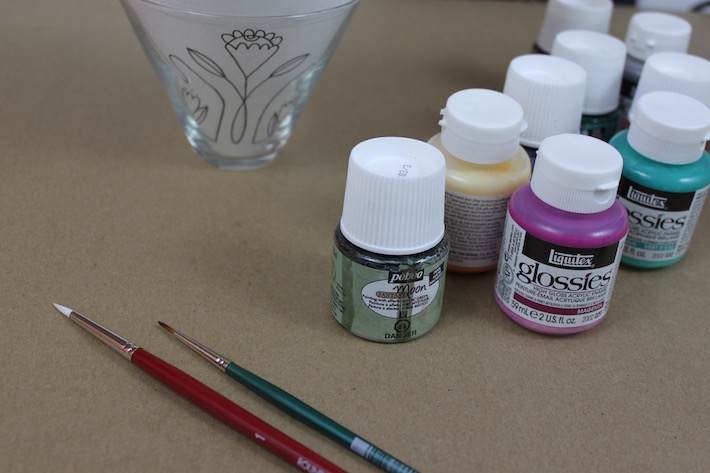
To paint on glass, you’ll need pigment that’s specially formulated for it. There are many brands that produce this type of paint. Here, I’ve selected several pigments from Liquitex Glossies and Pebeo’s Fantasy Moon paints.
Be sure to read the label before selecting a brand of paint. For example, the Liquitex paints are water soluble, meaning you can thin the pigments with water (and wash them, too!). The Pebeo pigments are oil-based and must be cleaned using mineral spirits or turpentine.
Much of painting on glass require small brushes. I alternated between two liner brushes.
How to create your design:

Step 1:
The first step is making a guide. To determine how big to draw your guide, first cut a piece of paper and roll or fold it so that it fits into your glass. Then, while the paper is still in there, trace the glass’s top edge using a pencil. Then remove the paper and you have the guidelines to create your design on.
Step 2:
Sketch your design in the space you outlined on the paper. Once you’ve got your design finalized, use a pen to trace over any pencil lines. That way, it will still be visible even as you paint over it.
Step 3:
One of the biggest questions you might have is: “How do I transfer my design onto the glass?” It’s easier than you’d think. Once you’ve drawn your image on the paper and washed and dried your glass, simply tape the paper to the inside of your glass. Since the glass is transparent, any design will show through!

Painting your design onto glass:
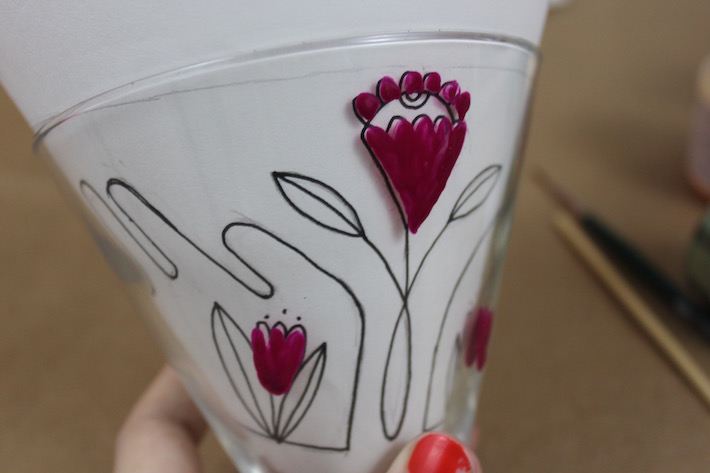
Once you’ve got your guide set, it’s time to start painting on the glass. I altered my usual painting technique for this project. Usually, I work in thin layers and gradually build up color. With these pigments, however, it’s best to apply the paint in semi-thick layers. They take up to 24 hours to fully dry and are prone to cracking or fracture if you paint on top of them too soon.

When you’re painting, imagine that you’re icing a cake. Gather a generous amount of pigment onto your bristles and then apply them to the glass. Then, carefully smooth the paint into shape, using your paper design as a map.
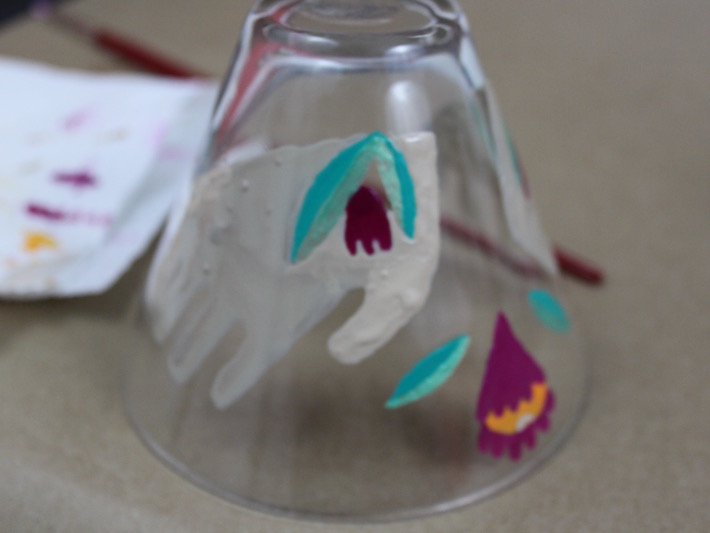
Tip: You might find it easier to paint if your glass is turned upside down! That way, you’re focusing on abstract shapes rather than your design — you’ll probably paint slower and exercise better craftsmanship.
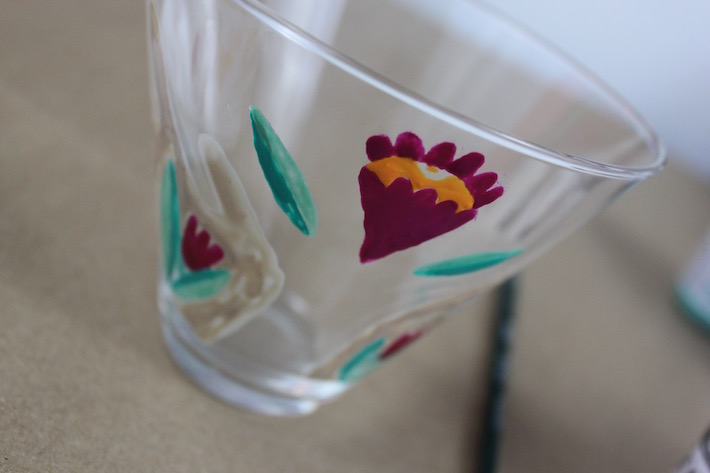
Tip: Once you’ve painted within your guide, you can remove it from the glass. You’ll see how light still shines through the pigment. Once the paint is fully dry, feel free to add additional layers of paint.
Finishing your glass painting:
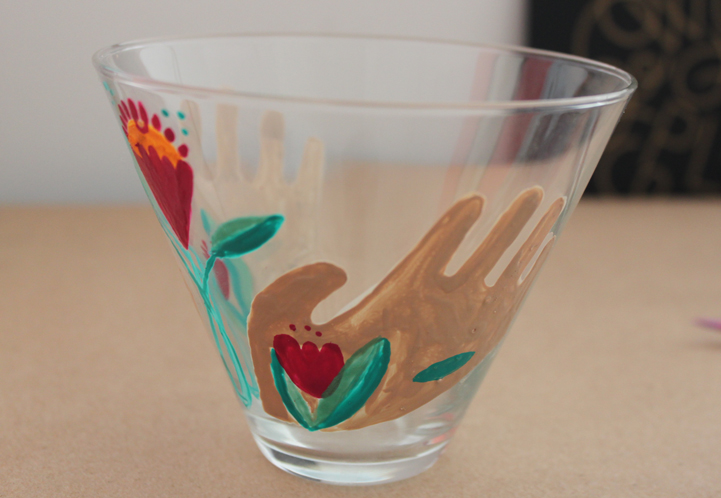
The final step in painting on glass is “setting” it. For this, you can use the bake method:
- Place your glassware in a cool oven.
- Set the oven to 350 F.
- Bake for 30 minutes.
- Turn the oven off, leaving the glass inside until completely coo.
The glass must gradually heat and cool with the oven — otherwise, it will break.
Note: Read your paint’s label for exact oven temperatures. The Glossies paints, for instance, instruct you to bake at 325 F.
Can you eat or drink with painted glass?
The answer lies on your paint label, but as a general guideline, food should not come in contact with a painted surface.

Very cool!!!
Thank you...this information was very helpful. My question is, I wanted to paint wine goblets and is it possible to paint on the rim of the glass? Also, can they be washed by hand or in the dish washer afterwards? Thank you